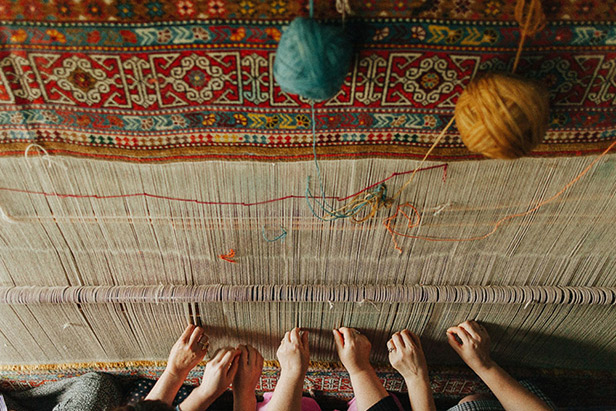Dagestani craftsmen: how to make a rug with your own hands

The mastery of rug weaving is traditionally passed on from one generation to another. Girls start watching their mothers at work. In Tabasaran families, women were the family’s primary breadwinners since they earned more money than the men.
Nikolay Rykov, Dmitry Chistoprudov

The best wool rugs from Russia are woven in Tabasaran ( a province in the south of Dagestan). This is where they make hand-made tufted carpets using a centuries-old design.
Nikolay Rykov, Dmitry Chistoprudov
The people of Tabasaran who live in Dagestan are the only ethnicity in Russia that continues a traditional art form: rug weaving.
Nikolay Rykov, Dmitry Chistoprudov
At one time, rugs were not as ornate as they are now and weren’t much to decorate a room with. The nomadic peoples that inhabited oriental countries first made them as practical object that helped keep their homes warm, were easy to transport, and stayed intact for many years.
Nikolay Rykov, Dmitry Chistoprudov
Over time, rugs began to include patterns that became more complex and elegant. Their level of upkeep was a mark of their owner’s status.
Nikolay Rykov, Dmitry Chistoprudov
These days, rugs are a must in every Dagestani home. In poorer families, lint-free sumacs lied on the floor. Wealthier families covered piled their floors high with heavy rugs.
Nikolay Rykov, Dmitry Chistoprudov
Rugs are made here in almost every home. If they’re not for sale, they’re made for use at home.
Nikolay Rykov, Dmitry Chistoprudov
In this home, five masters are finishing weaving a large rug. They worked on it for more than 6 months!
Nikolay Rykov, Dmitry Chistoprudov
In order to make a rug, you must first make a base. Dense cotton threads are tightly wound around parallel frames. Several women then sit at the machine and start their main work.
Nikolay Rykov, Dmitry Chistoprudov
Using a special hook, they tie a knot made of colored yarn around each thread. These masters work at a breath-taking pace.
Nikolay Rykov, Dmitry Chistoprudov
When one row is finished, they press it using a heavy comb. Uneven ends are cut using large scissors. This is how they attain piles of a certain depth.
Nikolay Rykov, Dmitry Chistoprudov
In order to make sure they’re don’t make a mistake in the pattern, the women check a pattern on a cheat sheet. However, more experienced rug weavers know the pattern by heart.
Nikolay Rykov, Dmitry Chistoprudov
Rugs made from wool colored using natural color agents are considered to be the most valuable. The skills for knowing how to get this or that color have been passed on from generation to generation. Many different colors can be made using plants, minerals, or insects.
Nikolay Rykov, Dmitry Chistoprudov
The women have finished their work. After one of them has cut the main threads, they ceremoniously take their beautiful rug into the courtyard.
Nikolay Rykov, Dmitry Chistoprudov
The rug should now be sent to its owner. He or she will be able to enjoy for no less than 300 years.
Nikolay Rykov, Dmitry Chistoprudov
The mastery of rug weaving is traditionally passed on from one generation to another. Girls start watching their mothers at work. In Tabasaran families, women were the family’s primary breadwinners since they earned more money than the men.
Nikolay Rykov, Dmitry ChistoprudovAll rights reserved by Rossiyskaya Gazeta.
Subscribe
to our newsletter!
Get the week's best stories straight to your inbox